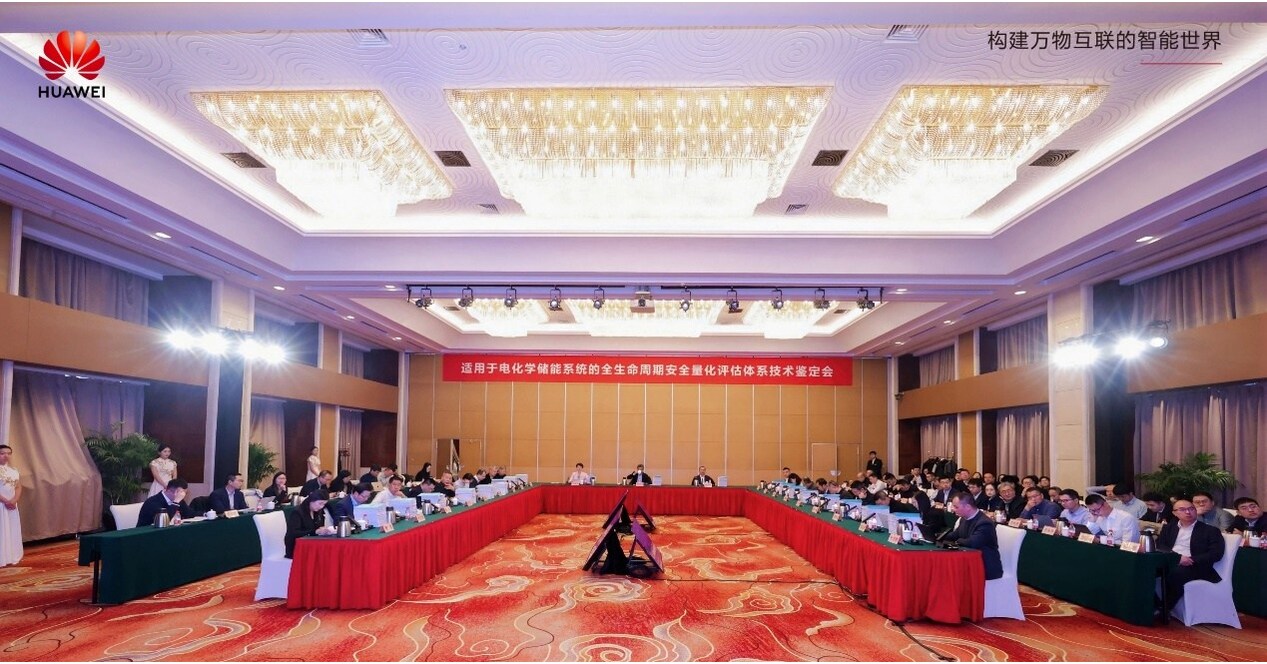In today’s rapidly changing business landscape, resilience has emerged as a critical factor for organizational success. This report delves into the concept of resilience within the corporate context, exploring its implications for market trends, financial stability, and overall industry performance. The findings indicate that companies exhibiting high levels of resilience not only tend to navigate challenges more effectively but also capitalize on opportunities that arise from uncertainties.
One of the key insights from the analysis is the correlation between resilience and market adaptability. Organizations that prioritize resilience are often better positioned to respond to disruptions, whether they arise from economic fluctuations, technological advancements, or global events. As a result, such firms experience less volatility in their performance metrics and tend to maintain a stronger foothold within their respective markets. Furthermore, investments in resilient strategies have been shown to yield positive financial outcomes, creating a robust foundation for long-term growth.
Additionally, the report reveals that industry leaders are increasingly recognizing the value of resilience as a differentiating factor. Companies that foster a resilient culture are not only better equipped to handle adversity but also attract top talent, thereby enhancing their competitive advantage. A focus on resilience encourages innovation, as organizations become more willing to experiment and embrace change, leading to potential breakthroughs in products and services.
In summary, the report underscores the importance of resilience in shaping the future of businesses. By integrating resilience into strategic planning and operations, organizations can improve their chances of thriving amid uncertainty while contributing positively to the overall economic environment. The findings serve as a clarion call for business leaders to prioritize resilience as they navigate the complexities of today’s corporate world.
Resilience in a corporate context refers to an organization’s ability to anticipate, prepare for, respond to, and recover from disruptions in a dynamic business environment. This concept has gained significant prominence as companies face an array of challenges, ranging from economic fluctuations and technological disruptions to social changes and unexpected biological events such as pandemics. In today’s volatile landscape, the resilience of an organization is not merely a tactical advantage; it has become an essential framework for survival and growth.
The twenty-first century has underscored the importance of corporate resilience as businesses navigate a plethora of uncertainties. Economic recessions, shifting consumer behaviors, and technological advancements are just a few examples that necessitate organizations to cultivate a culture of adaptability and strength. Moreover, the recent global health crisis has highlighted vulnerabilities across various industries, propelling resilience to the forefront of corporate strategy and dialogue. Organizations that had already adopted resilient frameworks fared significantly better than their counterparts, leading to renewed interest in this critical aspect of business management.
Understanding the inherent value of resilience involves analyzing its multifaceted dimensions. It encompasses not only the ability to withstand shocks but also the capacity to innovate and thrive in the aftermath. Companies that proactively embrace resilience are more likely to implement effective risk management strategies, foster robust supply chains, and cultivate a workforce that is empowered to deal with challenges. As corporate resilience becomes a pivotal element of strategic planning, organizations are increasingly investing in training programs, resource allocation, and leadership development focused on fortifying their capabilities to respond to changes.
Current State of Resilience in Businesses
In today’s dynamic and often unpredictable business environment, resilience has emerged as a critical attribute for organizations striving for sustained success. Resilience can be defined as the ability of a business to effectively anticipate, prepare for, respond to, and recover from adverse situations. The current landscape reveals varying degrees of resilience among industries, characterized by effective risk management strategies and adaptive capacities. Notably, companies that prioritize resilience often outperform their peers in terms of both operational efficiency and stakeholder trust.
Numerous studies indicate that robust resilience frameworks can lead to improved financial performance, with organizations that exhibit higher resilience scores showing 20% better earnings on average compared to those with weaker frameworks. For example, during the COVID-19 pandemic, technology firms like Microsoft and Amazon showcased their resilience through agile responses and innovations that addressed shifting consumer demands. These companies quickly transitioned to remote work models and enhanced their digital offerings, thus maintaining operational continuity and customer engagement.
Key metrics for assessing resilience include the capability to pivot business models in response to crises, the agility in supply chain operations, and the ability to sustain employee engagement during challenging periods. According to research by McKinsey, companies with strong resilience strategies can sustain revenue declines of up to 40% without experiencing significant operational setbacks. In contrast, those lacking a resilient framework risk collapsing during economic downturns or unforeseen challenges.
Furthermore, industries characterized by high volatility, such as travel and hospitality, have illustrated both the triumphs and failures of resilience initiatives. Examined through the lens of performance metrics, organizations that invested in adaptive training and scenario planning have frequently emerged more robust than their competitors. Thus, in understanding the corporate impact of resilience, it becomes evident that cultivating this quality is no longer optional; rather, it is essential for enduring success in an ever-evolving market landscape.
Market Trends Influencing Resilience
In recent years, various market trends have emerged that significantly influence resilience within corporate environments. Understanding these trends is essential for organizations looking to adapt and thrive amidst a rapidly changing landscape. Shifts in consumer preferences, economic disruptions, and technological advancements are the primary driving forces reshaping corporate strategies.
One major trend has been the evolution of consumer preferences, which has increasingly leaned towards sustainability and ethical business practices. This shift demands that companies remain agile and responsive to customer values, emphasizing social responsibility. Brands that fail to align with these consumer expectations risk losing market share, while those that successfully integrate sustainable practices into their core strategies enhance their resilience in the process.
Economic disruptions, such as those caused by global pandemics, geopolitical tensions, or inflationary pressures, have compelled businesses to rethink their operational models. Organizations with a keen focus on resilience have incorporated risk management strategies and diversified supply chains to mitigate potential threats. Data has shown that companies that embrace flexibility and adaptability during economic challenges are better positioned to recover and maintain competitive advantages. The ability to pivot and reassess corporate strategies is crucial in fostering resilience against unpredictable market dynamics.
Technological advancements also play a pivotal role in shaping resilience. The advent of digital transformation has provided companies with innovative tools to enhance productivity, streamline operations, and improve customer engagement. Embracing technologies such as artificial intelligence and automation allows organizations to anticipate market shifts and respond proactively. A data-driven approach enables firms to identify trends early on, thus developing strategies that bolster resilience.
Ultimately, the interplay between consumer preferences, economic fluctuations, and technology underlines the importance of cultivating resilience in corporate strategies. Companies that remain attuned to these market trends position themselves to navigate challenges more effectively and secure long-term success.
Financial Implications of Building Resilience
Building resilience within a corporate framework inherently involves a range of financial implications. The initial costs associated with implementing resilience strategies can be significant, as organizations may need to invest in new technologies, training programs, or operational changes. These expenses, while substantial at the outset, have the potential to yield a robust return on investment (ROI) over time. Companies that prioritize resilience often experience enhanced operational efficiency, reduced downtime, and improved adaptability to market changes, which can translate into long-term financial benefits.
One of the key aspects to consider is that organizations demonstrating resilience are generally better positioned to withstand crises, whether these are economic downturns, shifts in consumer behavior, or disruptions caused by unforeseen events. By establishing comprehensive risk management strategies and fostering a culture of adaptability, businesses can mitigate losses during challenging times. This proactive approach not only alleviates financial burdens but also demonstrates to investors and stakeholders that the organization is committed to sustainability and long-term success.
Additionally, a resilient organization tends to have a stronger reputation in the marketplace, appealing to a wider array of investors. Corporate resilience has increasingly become a point of differentiation, enhancing stakeholder confidence and potentially leading to increased investment. This competitive advantage can be a pivotal factor in attracting interest from financial backers who seek stability and progressive growth in their portfolios. Notably, as stakeholders recognize the value of resilience, firms that embrace these principles may find enhanced valuation and support in capital acquisition endeavors.
In summary, while the financial implications of building resilience may require substantial upfront investment, the potential for increased ROI, enhanced stakeholder appeal, and a stronger market position make it a critical consideration for forward-thinking organizations. The long-term benefits of fostering resilience can significantly outweigh the initial costs, proving its value as a strategic financial objective.
Broader Economic Implications of Resilience
The concept of resilience extends far beyond the confines of individual organizations; it holds substantial economic implications that influence entire industries and communities. Resilient businesses, characterized by their ability to adapt, recover, and thrive amidst challenges, play a crucial role in fostering economic stability and growth. They not only safeguard their own interests but also contribute to the robustness of the broader economy.
One significant aspect of business resilience is its impact on job markets. Resilient companies tend to maintain their workforce during economic fluctuations, thus providing employment stability in their regions. This continuous employment helps bolster consumer confidence, as job security tends to correlate with increased spending. Consequently, these businesses contribute to overall economic health by sustaining demand across various sectors. Additionally, resilient organizations often invest in workforce development, equipping employees with skills that prepare them for future challenges, further enhancing the resilience of the labor market.
Moreover, resilient businesses enhance the stability of supply chains, which is vital for economic function. When companies can effectively respond to disruptions—be it supply shortages, natural disasters, or market volatility—they not only mitigate their own risks but also maintain the integrity of the supply chain networks upon which many industries rely. This interconnectedness means that the resilience of a single entity can have ripple effects across multiple suppliers and distributors, ultimately influencing pricing, availability, and consumer access to goods and services.
In summation, the broader economic implications of resilience are profound. Resilient businesses contribute not just to their own survival but play a pivotal role in assuring economic stability and fostering growth. Their influence is felt across job markets and supply chains, underscoring the necessity for organizations to cultivate resilience not only for their benefit but for the overall health of the economy.
Expert Insights on Corporate Resilience
In the ever-evolving landscape of corporate operations, resilience has emerged as a pivotal element in determining the sustainability and success of businesses. Renowned analyst and strategist, Dr. Emily Carter, emphasizes that “a resilient organization not only survives challenges but thrives in the face of adversity.” This perspective underscores the significance of fostering adaptive capabilities within firms. According to Dr. Carter, companies that invest in resilience training and frameworks are better positioned to navigate disruptions, ultimately securing their competitive edge.
Moreover, John Matthews, CEO of a leading tech firm, asserts that resilience is synonymous with innovation. In his words, “Innovation is born out of necessity; resilient companies leverage challenges as opportunities to rethink their strategies and processes.” This statement highlights the symbiotic relationship between resilience and innovation, hinting that a company’s ability to pivot and innovate in response to crises can set it apart in a crowded marketplace. By nurturing a culture that encourages risk-taking and creative problem-solving, organizations can significantly enhance their resilience.
Additionally, human resources expert Sarah Long notes, “The emotional and mental resilience of employees directly impacts the overall resilience of the organization.” Long suggests that cultivating individual resilience and offering support systems, such as wellness programs and mental health resources, are crucial for building a resilient corporate culture. She emphasizes that companies prioritizing employee well-being tend to perform better during periods of uncertainty, as a motivated workforce drives robust recovery strategies.
In conclusion, insights from industry leaders illustrate that corporate resilience is not merely a defensive posture; it is an essential characteristic that enables businesses to thrive. By integrating these perspectives into their operational frameworks, companies can better prepare for the uncertainties ahead.
Risks and Opportunities Associated with Resilience
Resilience in a corporate context encompasses the ability of an organization to anticipate, prepare for, respond to, and recover from adverse situations. While implementing resilience strategies offers companies various opportunities, it also presents certain risks that require careful consideration. Understanding these factors is vital for effective corporate planning.
One of the primary opportunities associated with corporate resilience is enhanced adaptability. Organizations that foster resilience can pivot quickly in response to changing market conditions, emerging technologies, or unexpected disruptions. This adaptability not only leads to improved operational efficiency but can also enhance an organization’s competitive edge. Furthermore, resilient businesses are often better equipped to innovate, as they consciously view challenges as opportunities for growth and transformation.
Conversely, there are costs associated with strictly adhering to resilience strategies. Developing and maintaining a comprehensive resilience framework may require significant investment in terms of resources, training, and technology. Additionally, organizations may face challenges during implementation, such as resistance from employees who are accustomed to conventional methodologies. The complexity involved in establishing and embedding resilience practices can lead to delays and unforeseen complications, thus consuming valuable time and resources.
Moreover, businesses may encounter the risk of over-reliance on resilience measures. This can result in complacency, where the focus on preparing for disruptions may detract from core operations and strategic growth initiatives. A balanced approach is essential to ensure that resilience practices complement the overall business strategy without overshadowing other important objectives.
In conclusion, while there are considerable opportunities associated with fostering resilience within an organization—such as improved adaptability and innovation—there are also risks that must be carefully managed. Organizations that successfully navigate these complexities are more likely to thrive in an ever-evolving corporate landscape.
Future Outlook on Corporate Resilience
As organizations continue to navigate the complexities of the modern business landscape, the importance of corporate resilience is becoming increasingly recognized. Future trends suggest that resilience will not only be valued as a reactive measure but also as a proactive strategy essential for long-term sustainability and success. According to current market data and expert insights, companies that prioritize resilience are better equipped to adapt to disruptive changes, mitigate risks, and capitalize on new opportunities.
The integration of advanced technologies such as artificial intelligence and data analytics is expected to play a pivotal role in enhancing corporate resilience. Businesses that leverage these innovations can analyze vast amounts of data to anticipate potential disruptions and make informed decisions swiftly. Additionally, the growing emphasis on cybersecurity as a critical component of resilience will influence operational strategies. Organizations will need to invest significantly in protecting their digital assets and infrastructure to maintain their competitive edge.
Moreover, as consumer expectations evolve, businesses will need to emphasize transparency and ethical practices as part of their resilience framework. Corporate social responsibility (CSR) initiatives are projected to gain momentum, with customers increasingly favoring brands that demonstrate a commitment to societal and environmental well-being. This shift will likely drive companies to embed resilience into their core values, influencing everything from supply chain management to employee engagement.
Looking ahead, the workplace itself is expected to transform significantly as organizations adopt more flexible, inclusive, and resilient work models. Future-focused companies will prioritize employee well-being and foster a culture that encourages adaptability and innovation. A resilient corporate culture not only enhances employee morale but also leads to improved performance, ultimately benefiting the bottom line.
In conclusion, the future of corporate resilience appears promising, characterized by an increasing emphasis on technology, ethical practices, and adaptive workplace strategies. Organizations that proactively cultivate resilience are likely to thrive amid uncertainties and complexities, positioning themselves for enduring success in an ever-changing marketplace.
Bibliography
The importance of resilience within corporate structures is reflected through various research contributions, articles, and case studies. Below is a compilation of key sources that provide valuable insights into the concept of corporate resilience and its implications on organizations.
One of the foundational texts in understanding corporate resilience is “Resilience Engineering in Practice: A Guide for Train Accident Investigators” by Erik Hollnagel. This book delves into the principles of resilience engineering, emphasizing the adaptability of businesses in complex environments. Another pivotal resource is “Organizational Resilience: How Learning, Agility, and Trust Fuel Results” by Andrew M. Pettigrew, which explores how firms can cultivate a resilient culture that reacts effectively to disruptions.
Additionally, research published by the World Economic Forum highlights the role of strategic foresight and adaptive capacity in enhancing corporate resilience. The report titled “The Global Risks Report” reveals long-term trends that organizations should consider to bolster their resilience against economic and social upheavals.
Scholarly articles such as “Building Organizational Resilience: A Structured Literature Review” by D. K. N. G. Auer and M. J. Coombs provide a comprehensive review of the existing literature on resilience, identifying essential frameworks and indicators that organizations can utilize to improve their resilience strategies. Furthermore, case studies like “How Companies Can Build Resilience to Disruptive Events” published in Harvard Business Review, illustrate practical applications of resilience theories in real-world corporate settings.
Lastly, the International Journal of Production Research has published multiple relevant articles discussing the operational aspects of resilience in supply chain management, which is crucial for understanding how corporations can maintain continuity during crises.
This bibliography serves as a resource for those seeking to deepen their understanding of resilience in the corporate context, ensuring transparency and providing paths for further exploration.



